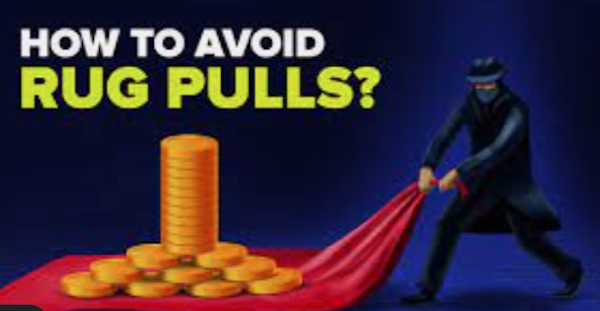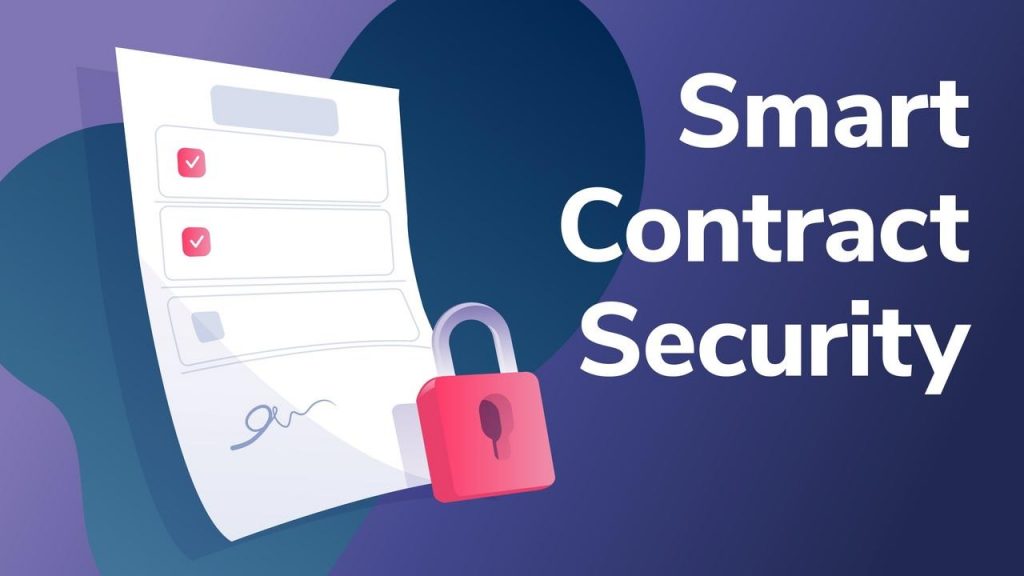We’ve already covered NFT specifics in other articles. This article will focus on accentuating the positive aspects of NFTs by avoiding the negatives. NFTs bring us unique world-changing features. Unfortunately, professional fraudsters will invite themselves to the party whenever the potential for earning great rewards exists.
There have already been some notable NFT scams over the past year. For example, one perpetrator named “Evil Ape” created the Evolved Apes NFT series only to pull the rug on a bevy of zealous investors and take off with 798 of their ETH tokens.
Other tricksters started Solana Towers to hawk virtual condos in the metaverse. Unfortunately for those who bought into the idea, the virtual real estate developers looted them for 1,881 SOL tokens before disappearing. Unfortunately, there are other scams as well.

NFT scams come in various forms, from “rug pulls” to over-hyped sales pitches. We’ve all encountered over-hyped sales pitches from multi-level marketing promoters to salespeople selling used cars. But for those unfamiliar with the term, let’s first look at rug pulls.
NFT Scams – Rug Pulls
A rug pull is just like it sounds. It describes an event where a project’s creators abandon ship and sneak off with the profits. But don’t confuse a failed project with a rug pull. Just because a project fails does not mean it was an intentional rug pull or other NFT scam. The NFT market is volatile, and things can go south quickly, even for teams with good intentions.
Even one of NFT’s high-profile cheerleaders, Gary Vaynerchuk, claimed that “99% of NFTs will not be good investments.” So, while picking winning NFTs is not the object of this article, you can at least learn how to defend against the possibility of NFT scams.

Are you new to NFTs or crypto in general? Build a good foundation for yourself by taking the Crypto for Beginners course at Moralis Academy.
Avoid NFT Scams – Research Discord
Before investing in an NFT drop, check out the community through their Discord channel. Discord is one of the essential steps on your journey to understanding NFT enterprises before investing. You can get a feel for the community by following conversation topics and interacting with other members.
The first thing to check is the number of members. If a venture picks up massive amounts of members in a short period, this could be a potential red flag. That’s because building up a grassroots following takes time. Steady membership growth is a more likely and better scenario. Or you might see an enterprise take years to build up thousands of followers, then suddenly spike in growth rate after it hits critical mass.

However, if you see a Discord pop up out of nowhere with 150,000 members, that should trigger your “spidey senses.” Even Spider-Man should proceed with caution because the channel could be full of bogus accounts and bots.
Query Discord Creators and Members
If you have questions about an NFT launch, engage the creators. They should at least have a presence on Discord. When answering your questions, please pay attention to how they respond. Are they forthright? Or do they appear evasive and merely redirect the conversation without answering your question?
Also, take note of the tone in responses to fair criticism. As long as questions are reasonable, you shouldn’t expect a hostile reaction. Founders that are in it for the long haul will be more interested in building a long-term community and will field questions naturally to the best of their ability.
On the other hand, rug pullers and other fraudsters will be more interested in keeping their members focused on the hype of getting rich quickly rather than the technical aspects of the project. If your questions alert other members to what’s up, it could spook them. In this case, unethical leaders will try to shut you down.

Get “major-league” concerned if you see the team kick people out of their Discord channel for asking reasonable questions (emphasis on “reasonable”). You only want to participate in ventures with open and forthright leaders, not secretive ones.
Discord – Fake Members and Spam
When researching Discord, you want to see conversations of substance, not over-hyped discourse with fake members and spam. Be careful of “salesy” language like “here comes the next CryptoPunks!”. An abundance of sales rhetoric tends to go hand in hand with weaker projects.
Suppose you feel that project leaders are over engaging in the hype and the members are eating it up. It doesn’t necessarily mean that the members are all fake. The community may buy into it since it feeds their own “moon-boy” fantasies. If your questions illuminate some apparent issues that puncture their fantasy balloon, the members might also accuse you of spreading FUD. So, use your judgment to determine if the community is too emotionally invested in the venture to employ the power of reason.
Find out about the most expensive NFTs sold.
Research Twitter Followers
You can use the same rules when investigating Twitter. However, with Twitter, you primarily want to check the follower count. Founders may boast about their number of followers, but you’ll want to check to ensure that a high percentage of these are not fake.
In addition, be wary of unsolicited Twitter DMs that come out of the blue. If a random NFT project notifies you about an upcoming drop through a DM, check to see if any of your followers also follow them. If not, and you notice the NFT’s Twitter account has gained an extraordinary amount of followers for such a new enterprise, consider it a red flag.
Legit projects won’t solicit you via DMs or source bogus followers to pump their numbers. The legit NFT ventures will build themselves up via organic interest.
Want to know how to store crypto? Be sure to read our “What is Phantom Wallet?” article.

Poor Quality Code
If the project passes the Discord and Twitter tests, that’s a good start. But if you’re dropping a large amount of crypto on a lesser-known project, you may want to take it a step further to avoid NFT scams.
Bad coding can lead to multiple problems such as bugs and mint exploits. However, sleuthing out code smells is not a skill that novices have. So, a better solution is to follow experts on social media who understand such things. If they’re tweeting about problems with an NFT’s code, you’ll do well to listen.
If you’re more technical and can look through the code, then, by all means, do so. The smart contract address is a place to start. If you can’t find the smart contract address, you can ask for it on the team’s Discord.
Security Audits
If you’re participating in NFTs, you want to pick projects with audited smart contracts. Smart contracts that haven’t undergone security audits are riskier prospects. After all, even audited projects get hacked. But at least they’ve undertaken some basic security measures. However, don’t think that every unaudited project is behaving recklessly.
At present, every security audit firm is swamped due to excess demand. Many teams want to launch, but they don’t feel like waiting forever for a security audit before they go to market. Thus, lots of DeFi projects, including NFTs, are taking considerable risks to get to market more quickly.

Learn about Bitcoin mining companies here.
Over-Hyped Roadmaps and Promises
It would be best if you also watched out for over-hyped roadmaps that make vague promises. Such promises can include claims that the project’s NFT characters will soon appear in a video game or integrate with a piece of digital land in the metaverse. Just remember, a quality video game can take years to develop, so be wary of short-term promises about game inclusion.
Furthermore, promises of buying land in the metaverse can be uber vague. Such claims would be like a real estate developer promising to purchase land somewhere on the North American continent. If vague promises such as these raise red flags, you can question them in Discord.
If you discover that a video game is definitely in the works, here are a few more things to check:
1. Plot
If the game’s plot doesn’t make any sense to you, consider it a risky investment.
2. Developers
Check out the background on the game developers to ensure they’re legit. You want to see if they have designed other NFTs before. Lack of a track record gives the project a greater likelihood of going down in flames.

Learn about Ethereum game programming at Moralis Academy!
How to Avoid NFT Scams Checklist (1 – 4)
To sum up, below is a quick list of things to look out for before diving into an NFT venture.
1. Anonymous Teams
Beware of the anonymous team. If a team is planning a rug pull, of course, they’ll want to stay anonymous so no one can track them. However, this factor is not necessarily a precursor to a rug pull. Some developers may prefer privacy. So, if the codebase is solid, an anonymous team is not necessarily a dealbreaker.
2. Social Channels
Ensure the team not only has a website and social channels but has also done some interviews. Have you ever wondered what the top crypto YouTube channels are? Be sure to check out our blog article on that topic!
3. Roadmap
A team with a roadmap is a good sign. Scammers intending to do a rug pull can also concoct a bogus roadmap. But when no roadmap exists at all, it’s even worse.
4. Tokenomics and Partnerships
Check that the tokenomics makes sense for the long run. You don’t want to buy into a “pump and dump” scenario. So be sure that the team’s developers, founders, partners, and VCs can’t unload their tokens all at once and drive the price into the ground. Otherwise, they could dump on you right after you’ve invested.
How to Avoid NFT Scams Checklist (5 – 7)
5. Exorbitant Mint Prices
There’s no singular correct answer when determining reasonable mint prices. However, if an NFT’s minting price is way outside the norm for comparable projects, take notice and ask why.
6. Poor-Quality Art
If you find an NFT project with art that looks like some paid “wrist” thoughtlessly cranked it out for a quick buck, it’s not going to hold its value. Yes, art is subjective, and one man’s trash is another man’s treasure. But if the art looks generic, the project is probably generic. If you don’t have a good eye, then try to find the opinion of someone who does.
7. Purchase Maximums
The number of NFTs one user can purchase should have limits. The smaller the limit, the better, with five being an adequate ceiling. Otherwise, if one buyer can snatch up a large amount of NFTs in one transaction, it can squash community participation and possibly ruin the project. Large or no limit maximums only beg for whale dominance where a small group of investors can distort market prices.

NFT Scams and How to Avoid Them – Summary
In sum, many of the above steps may seem too tedious to follow. After all, who wants to waste time analyzing an NFT when it’s much more fun to “ape in” before the mob piles on and drives up the price.
NFT investing can be extremely rewarding, but before you get caught up in FOMO and jump in, you might want to take a minute to consider the risks. Most importantly, if you have the time to mitigate some of the risks, why not do so? Some of the issues you uncover will be automatic dealbreakers, but others won’t. All of the above, however, are worth considering.
If an NFT project is all hype and no substance, if its promises sound too good to be true, then they probably are. One thing is for sure, the better you become at spotting red flags, the more successful your NFT investments will be. If you can successfully maneuver around the fraudsters, picking the right NFTs can be as satisfying as picking the winning horse.
You can create or invest in NFTs for profit. Or, if you want a more sure-fire way to get paid for your hard work, learn how to become a blockchain developer today by joining Moralis Academy!




